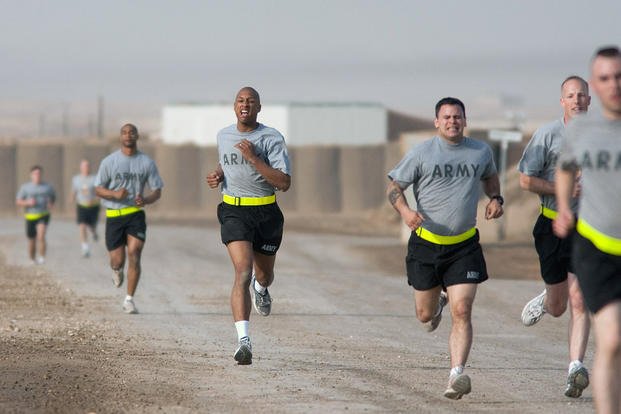I received an email from a soldier, who writes:
Every time I take the PFT, I ace the PT part, but my run is much worse than if I ran first. Does the PT take that much out of me that I cannot run my normal pace had I not done the PT first?
As with any test, you have to learn how to take tests to score better. There are entire schools and curricula devoted to helping students pass the SAT, ACT and even the ASVAB. The schools are not so much devoted to teaching subjects, but showing students how to score higher on the tests by using strategy and techniques.
The physical fitness test in any branch of service is the same (see "Ace Any Military PFT" for more information). You need a strategy. For most PFTs, you have to do a series of upper-body exercises first (usually push-ups, sit-ups or pull-ups), then run for 1.5, two or three miles, depending on the service branch.

After you perform maximum repetition sets with your upper-body muscles, your heart has forced blood to the arms, shoulders and torso, leaving you very "pumped up." After that, running can be difficult because the heart now has to pump blood from your arms and torso down to your legs and, of course, oxygenate the blood repetitively.
When blood is "stuck" in the upper body -- as it is after a maximum repetition PT test -- your heart pumps harder than normal, which can throw off your known pace that you have trained to maintain for your run. Your breathing and heartbeat are more rapid, your arm swing is more stiff than fluid and relaxed, and your legs are burning for oxygenated blood. This will leave many to say at the end of the run, "I felt OK after the first two laps, but the first half-mile about killed me."
Here is the answer to the problem:
After you perform the PT test, take the time between the upper-body exercises to stretch the arms, chest, shoulders, stomach and lower back. Then run for about 2-3 minutes at an easy pace to get the blood down toward your legs. Finally, take about 3-5 minutes to stretch your legs. Keep shaking the arms, throughout the time between the PT and run, to loosen up.
This will help you feel better at the start of your timed run, and you will avoid feelings of breathlessness at your target pace. See the other running articles in the Military.com archive for ideas on increasing your speed and setting your goal pace.
Try the workouts listed in the Running and Cardio article archive, and read the "Interval Training for the PFT Run" article.
Stew Smith is a former Navy SEAL and fitness author certified as a Strength and Conditioning Specialist (CSCS) with the National Strength and Conditioning Association. Visit his Fitness eBook store if you're looking to start a workout program to create a healthy lifestyle. Send your fitness questions to stew@stewsmith.com.
Want to Learn More About Military Life?
Whether you're thinking of joining the military, looking for fitness and basic training tips, or keeping up with military life and benefits, Military.com has you covered. Subscribe to Military.com to have military news, updates and resources delivered directly to your inbox.


















